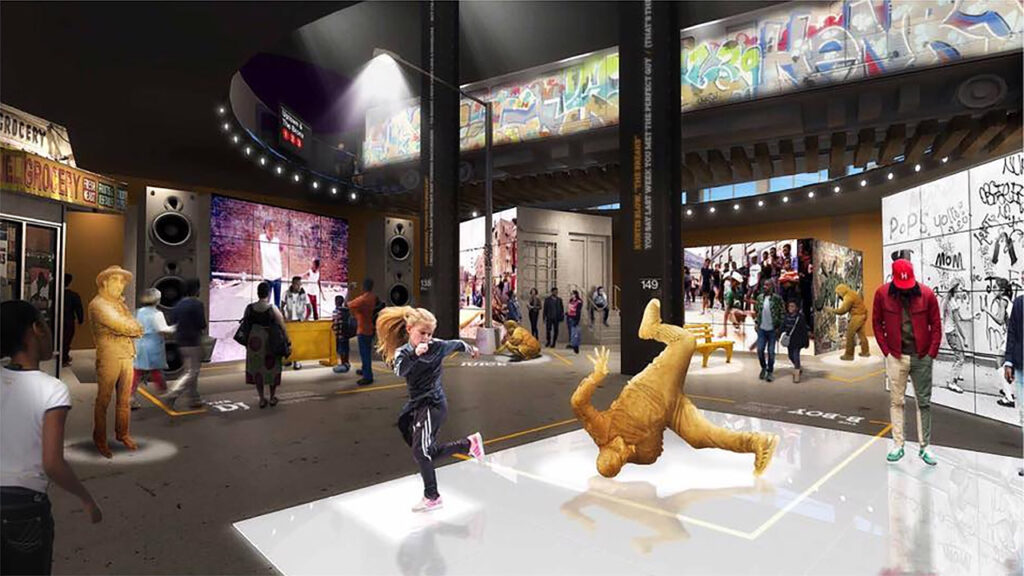Arriving in 2024, the Universal Hip Hop Museum (UHHM) has a simple enough mandate: to tell the story of hip hop’s past, present, and future. But it’s an endeavor that’s deeply complex, hip hop being a culture that harbors a rich and nuanced history, spans generations and styles, and reaches far beyond its Bronx birthplace. To tackle that vast field, UHHM is all set to maximize its prime tool, its digital database.
Currently, the museum’s digital collection counts artifacts such as DJ equipment, magazines, apparel, audio-visual material, and one Slick Rick’s throne in its number — and it’s only just getting started. At the helm of that archive is Martha Diaz, UHHM’s Chair of Archives, Curatorial, and Educational Affairs, who, besides overseeing its growth, is forging the institution’s digital asset management (DAM) system — what she calls “the most important software you could include in a museum” — entirely from scratch.

The DAM and Museums conference on February 2 will be accompanied by pre-event seminars, roundtable discussions, and other networking opportunities. Image: Henry Stewart Events
It’s a subject that Diaz will address in her keynote at the upcoming DAM and Museums 2022 conference on February 2 to highlight the potential for DAM to aid in the preservation and retelling of cultural history. And she’ll have much to draw from: as a seasoned curator and archivist, Diaz comes backed by a prolific career in which she’s produced exhibitions, publications, and education programs, mining her passion for connecting digital assets to impact and storytelling.
Diaz would be the first to admit, though, that she arrived at digital archiving quite by accident. As a student in Hip Hop Social Entrepreneurship at NYU Gallatin School in the early 2010s, she signed up for the Moving Image Archiving and Preservation Program at Tisch, simply to learn how to best catalog the 400 hip hop movies she’d amassed as part of her work with a hip hop film festival. While there, her professor, Mona Jimenez, awakened in her an enduring interest in cultural preservation. “She helped me take inventory, and describe and catalog the collection, and I really read about the importance of preserving these items as part of our impact,” Diaz tells Jing Culture & Commerce. “That’s how I got it.”

The UHHM’s digital archives spans artifacts from apparel to audio-visual material to historic images and photographs. Images: Uhhm.org
That “it,” she brought with her to the UHHM. In the summer of 2020, Diaz commenced the build-out of the museum’s DAM, beginning with mapping its metadata schema and customizing the software to fit the needs of the institution. In this, she’s had an assist from the museum’s tech partner, Terentia, which, she notes, are “bringing everything to the table,” as well as an “intergenerational staff” she’s in the process of onboarding.
The team also includes scholars and researchers who are joining Diaz in probing the depths of hip hop. To her, it’s this “research component where we identify the nuances of the culture” that will contribute to a robust DAM. Hip hop, again, encompasses a layered heritage, where a DJ could also be a b-boy, a graffitist, and a teacher, and where an artist like Sean Combs has gone by Puffy, Diddy, P.Diddy, and Love. Expansive research that logs such information (and more) would buttress any DAM’s metadata and naming conventions.

Once open, the UHHM plans to leverage its digital assets to create unique programs and enhance visitor experience. Image: artist’s rendering of the Universal Hip Hop Museum
And the opportunities the museum’s DAM system might present? “That’s gonna be the fun part,” says Diaz, who bubbles over with plans for the digital collection. With the material in its DAM, the venue intends to design unique educational programs aimed at students and teachers, and to offer access to scholars and filmmakers for research and licensing purposes. And of course, NFTs will be integrated into the archive from the outset to enable future virtual viewing.
In addition to ensuring smoother internal organization, UHHM’s DAM will be geared toward visitor experience. Per Diaz, “We are going to move our artifacts into a virtual world in which we can create immersive experiences, where patrons can interact with the artifacts in 3D, looking at an item from every perspective.” It’s very much in line with the museum’s mission, she adds, “to [use] technology to give people as much history, but also an experience of hip hop culture.”
Because a culture is built on and by people, UHHM will also be relying on crowdsourcing to enrich its DAM. The plan is for visitors to upload their own artifacts to UHHM’s database with a description telling their own story; the point is to capture the all-encompassing breadth of hip hop’s narrative. “Right now, we’re preserving the past and we’re even preserving some present artists, but we’re thinking about the future,” says Diaz. “And that’s the future, where we could get everybody engaged and actively involved.”



